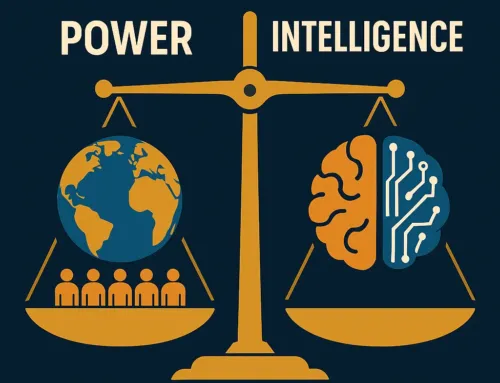
Approx. read time: 27.3 min.
Post: Teaching Kids Financial Literacy: Empowering the Next Generation with Essential Money Skills
Lecture: Empowering the Next Generation Through Financial Education
Introduction: The Importance of Financial Education for Children
Good evening, everyone. Thank you for joining us for this important discussion on financial education for children. Today, we will delve into the reasons why teaching kids about money is essential, the key concepts they need to learn, and practical strategies you can use to impart this knowledge effectively.
Financial literacy is more than just understanding how money works; it’s about equipping the next generation with the skills they need to navigate the financial world confidently. Unfortunately, many adults struggle with managing their finances, largely because they never received adequate financial education during their formative years. By teaching kids about money early on, we can help them avoid common pitfalls and set them on a path to financial success.
Section 1: Why Financial Education for Kids is Crucial
Financial education for kids is not just about preparing them for the future—it’s about empowering them in the present. Here are a few reasons why it’s crucial:
- Building Healthy Financial Habits Early:
- Just as we teach kids healthy eating habits to ensure their physical well-being, teaching them healthy financial habits is key to their financial well-being. Children who learn how to budget, save, and spend wisely are more likely to carry these habits into adulthood.
- Establishing these habits early also reduces the likelihood of poor financial behaviors such as overspending, impulsive buying, or falling into debt later in life.
- Reducing Financial Stress:
- Financial stress is a significant issue for many adults, often stemming from a lack of financial knowledge and poor money management skills. By equipping children with the tools to manage their finances, we can help them avoid the stress that comes from financial uncertainty.
- Financial education can also foster resilience, helping kids cope with financial challenges, such as unexpected expenses or changes in their financial situation.
- Understanding the Value of Money:
- In today’s world, where digital transactions are increasingly replacing cash, it’s easy for kids to lose sight of the value of money. Teaching them the basics of earning, spending, and saving helps them appreciate the value of money and the effort required to earn it.
- It’s also crucial to teach children about the concept of “money as a tool,” emphasizing that it’s not just for spending, but can also be used for saving, investing, and giving back to others.
- Preparing for Future Financial Responsibilities:
- As kids grow, they will encounter various financial responsibilities, from paying for their education to managing credit. Financial education prepares them for these challenges, ensuring they are ready to handle them when the time comes.
- Understanding financial responsibilities early on, such as student loans or credit card debt, can lead to more informed decision-making when they enter adulthood.
- Encouraging Entrepreneurship and Innovation:
- Financial literacy fosters an entrepreneurial mindset by encouraging kids to think creatively about how to earn, save, and invest money. This mindset is crucial in today’s economy, where innovation and entrepreneurship are increasingly valued.
- By learning the basics of managing money, kids can also gain the confidence to start their own small ventures, whether it’s a simple lemonade stand or a more complex business idea as they grow older.
Section 2: Key Financial Concepts Kids Need to Learn
To effectively teach financial literacy, it’s important to focus on the core concepts that will provide the foundation for a lifetime of good financial habits. Here are the key areas to cover:
- Earning Money:
- Understanding Income: Explain the concept of income and how it is earned through work, whether it’s a job, a business, or an investment. Kids should understand that money doesn’t just appear; it’s earned through effort and skill.
- Exploring Different Income Sources: Teach children about various income sources, including wages, salaries, business income, and passive income from investments. Discuss the importance of education and skills in determining income potential.
- Introduction to Taxes: As kids grow older, introduce the concept of taxes—how they work, why they are necessary, and how they affect income. This will prepare them for real-life scenarios where taxes play a significant role in their finances.
- Budgeting:
- The Concept of a Budget: A budget is a plan for managing income and expenses. Teach kids how to create a simple budget by listing their income and then planning how to spend or save it.
- Needs vs. Wants: One of the most critical lessons in budgeting is distinguishing between needs and wants. Help kids understand that needs are essentials like food, shelter, and clothing, while wants are non-essential items like toys or treats.
- Tracking Spending: Encourage kids to track their spending to understand where their money goes. This can be done through simple methods like keeping a journal or using an app designed for kids.
- Adjusting the Budget: Teach children that budgets are not set in stone. Circumstances change, and they may need to adjust their budget accordingly. This flexibility is key to successful money management.
- Saving Money:
- The Importance of Saving: Teach kids why saving is important, emphasizing that it allows them to have money for future needs, emergencies, or larger purchases.
- Setting Savings Goals: Encourage children to set specific savings goals, whether it’s for a toy they want, a gift for someone else, or long-term goals like education. This teaches them to be patient and disciplined with their money.
- The Power of Compound Interest: Introduce the concept of compound interest, showing how money saved in a bank or invested can grow over time. Use simple examples to illustrate how even small amounts saved regularly can add up to a significant sum.
- Emergency Funds: As they grow older, teach kids about the importance of having an emergency fund—money set aside for unexpected expenses. This is a critical part of financial security.
- Spending Wisely:
- Making Smart Purchasing Decisions: Teach kids how to compare prices, read reviews, and consider the value of what they are buying. Discuss the idea of opportunity cost—every time they spend money on one thing, they lose the opportunity to spend it on something else.
- Avoiding Impulse Buys: Help children understand the importance of thinking before they spend. Encourage them to wait before making non-essential purchases to determine if they really want or need the item.
- The Role of Advertising: Explain how advertising works and its impact on spending habits. Teach kids to critically evaluate ads and resist pressure to buy things they don’t need.
- Borrowing and Credit:
- Understanding Loans and Debt: Explain that borrowing money means taking out a loan, which must be paid back with interest. Use age-appropriate examples, like borrowing a toy and then returning it, to illustrate the concept.
- The Cost of Credit: Introduce the idea of credit and how it works. Explain that credit cards and loans come with interest rates, meaning they will pay back more than they borrowed if they don’t pay it off quickly.
- Credit Scores: As kids approach their teenage years, introduce the concept of a credit score—how it’s calculated and why it’s important. A good credit score can affect their ability to borrow money in the future and the interest rates they will pay.
- Investing:
- Basic Investment Concepts: Introduce kids to the idea of investing as a way to grow their money over time. Explain that investing involves putting money into something, like stocks or bonds, with the hope that it will increase in value.
- Risk and Reward: Teach children that all investments come with risks and that sometimes investments don’t pay off. However, over the long term, investing can be a powerful way to build wealth.
- Diversification: As they grow older, introduce the concept of diversification—spreading investments across different assets to reduce risk. Explain how this strategy can protect their money from market fluctuations.
- Giving Back:
- The Importance of Charity: Discuss the importance of using money to help others. Teach kids about charity and philanthropy, and encourage them to allocate a portion of their money to causes they care about.
- Volunteering: Beyond money, emphasize that time and skills are valuable resources that can also be used to help others.
- Creating a Giving Plan: Encourage children to create a giving plan, just like a budget, where they set aside money or time each month for charitable activities. This helps instill a lifelong habit of generosity.
Section 3: Practical Strategies for Teaching Financial Literacy to Kids
Now that we’ve covered the key concepts, let’s discuss practical ways to teach these lessons to children. It’s important to remember that kids learn best when they are engaged and when the lessons are relatable to their everyday lives.
- Lead by Example:
- Model Good Financial Behavior: Kids learn a lot by observing their parents and guardians. Demonstrate good financial habits, such as budgeting, saving, and making thoughtful spending decisions.
- Involve Kids in Financial Decisions: When appropriate, involve children in family financial decisions, such as planning a budget for a family vacation or deciding how to spend holiday money. This helps them see how financial principles are applied in real life.
- Transparency with Money: Be open about your financial decisions and explain why you make certain choices. This demystifies money management and encourages kids to ask questions and learn from your experiences.
- Use Real-Life Experiences:
- Shopping Trips: Use shopping as an opportunity to teach budgeting and smart spending. Give your child a small amount of money to spend and guide them through making choices about what to buy.
- Allowance: Providing an allowance is a great way to teach kids about managing money. Make sure the allowance is tied to chores or tasks so that children understand the connection between work and earning money.
- Savings Challenges: Create savings challenges for kids, such as saving a certain amount of money by a specific date. Offer a reward for meeting the goal to reinforce the benefits of saving.
- Gift Money: When kids receive money as a gift, use it as an opportunity to teach about saving, spending, and giving. Help them decide how much to allocate to each category.
- Games and Activities:
- Financial Literacy Games: There are many board games and online games designed to teach kids about money. Games like Monopoly, The Game of Life, or apps like PiggyBot can make learning about finances fun.
- Role-Playing: Set up role-playing scenarios where kids can practice making financial decisions, such as running a pretend store or managing a budget for a small event.
- DIY Projects: Encourage kids to create their own financial literacy games or activities. For example, they could design a board game based on saving and spending or create a budgeting worksheet for their weekly allowance.
- Books and Educational Materials:
- Children’s Books About Money: There are many books aimed at teaching kids about money. Titles like “Money Ninja” by Mary Nhin and “The Berenstain Bears’ Trouble with Money” by Stan and Jan Berenstain can help introduce financial concepts in a fun and accessible way.
- Educational Videos: Use educational videos and cartoons that explain financial concepts in a way that’s easy for kids to understand. Many free resources are available online that cover topics like saving, spending, and investing.
- Create a Financial Journal: Encourage children to keep a financial journal where they can record their savings, spending, and thoughts about money. This can be a reflective exercise that helps them internalize what they’ve learned.
- Create a Family Financial Plan:
- Setting Family Goals: Involve your children in setting family financial goals, such as saving for a vacation or a new piece of furniture. This helps them see the value of planning and working towards a goal.
- Regular Check-Ins: Have regular family meetings to check in on your financial goals and discuss any money-related topics. This keeps the conversation about money open and ongoing.
- Celebrate Achievements: When your family reaches a financial goal, celebrate it together. This reinforces the positive outcomes of good financial planning and encourages continued effort.
- Encourage Entrepreneurship:
- Starting a Small Business: Encourage your child to start a small business, such as a lemonade stand, dog walking, or selling handmade crafts. This teaches them about earning, managing, and investing money.
- Tracking Profits and Expenses: Help your child keep track of their business’s profits and expenses. This introduces them to basic accounting principles and the importance of managing money effectively.
- Reinvesting Profits: Teach kids the concept of reinvesting profits back into their business to help it grow. This is an introduction to the idea of using money to make more money, a key principle of investing.
- Open a Bank Account:
- Savings Accounts for Kids: Open a savings account for your child and encourage them to deposit a portion of their allowance or earnings regularly. This teaches them about banking, saving, and the importance of keeping money safe.
- Understanding Bank Statements: Show your child how to read a bank statement and explain the different components, such as deposits, withdrawals, and interest earned.
- Introduce Online Banking: As they grow older, introduce kids to online banking tools, teaching them how to monitor their account, transfer money, and set up automatic savings.
- Use Technology Wisely:
- Educational Apps: There are many apps designed to teach kids about money management. Apps like “Bankaroo” or “PiggyBot” allow kids to manage virtual money and learn financial concepts through hands-on practice.
- Digital Allowances: Consider using a digital allowance tool that allows kids to manage their money online. This can teach them about online banking, budgeting, and saving in a modern context.
- Security Awareness: Teach children about the importance of online security, including protecting their banking information and avoiding scams. This is increasingly important as more financial transactions move online.
Section 4: The Role of Schools and Community Programs in Financial Education
In addition to what parents and guardians can do at home, schools and community programs play a critical role in providing financial education to children. Here’s how these institutions can contribute:
- Integrating Financial Education into School Curricula:
- Financial Literacy Courses: Schools can offer dedicated financial literacy courses that cover topics such as budgeting, saving, credit, and investing. These courses can be integrated into math or social studies curricula to provide a well-rounded education.
- Real-World Applications: Encourage schools to use real-world applications, such as simulations or project-based learning, to teach financial concepts. For example, students could run a mock stock market or create a business plan as part of their coursework.
- Extracurricular Activities and Clubs:
- Finance Clubs: Schools can establish finance clubs where students can learn about money management, investment strategies, and entrepreneurship in a more informal setting.
- Competitions and Challenges: Organize school-wide competitions, such as a budgeting challenge or a stock market simulation, to make learning about finance fun and engaging.
- Community Programs and Resources:
- Workshops and Seminars: Community centers and local organizations can offer workshops and seminars on financial literacy for both kids and parents. These can cover a range of topics, from basic money management to more advanced subjects like investing.
- Mentorship Programs: Pairing children with mentors who have strong financial knowledge can provide them with guidance and support as they learn about money. Mentorship can also offer real-world insights and experiences that are invaluable for young learners.
- Partnerships with Financial Institutions:
- Bank-Sponsored Programs: Banks and credit unions often offer financial literacy programs for schools and communities. These programs can include resources like savings accounts for kids, educational materials, and even field trips to financial institutions.
- Scholarships and Grants: Financial institutions can also sponsor scholarships or grants for students who demonstrate strong financial literacy skills or who participate in financial education programs.
- Parental Involvement in School Programs:
- Parent-Teacher Collaboration: Schools can collaborate with parents to reinforce financial education at home. This could involve sending home resources or offering workshops for parents on how to teach financial literacy to their children.
- Volunteer Opportunities: Encourage parents with expertise in finance to volunteer at their child’s school or in community programs. They can offer valuable insights and practical knowledge to support the education effort.
Section 5: Addressing Common Challenges in Teaching Financial Literacy
Teaching financial literacy to kids is incredibly rewarding, but it can also come with challenges. Let’s address some common obstacles and how to overcome them:
- Complex Concepts:
- Simplify the Language: Financial concepts can be complex, but they can often be simplified for children. Use analogies and examples that relate to their lives, such as comparing saving money to storing toys in a box for later use.
- Build Gradually: Don’t try to teach everything at once. Start with basic concepts and gradually build on them as your child grows and understands more.
- Repetition and Reinforcement: Children often need to hear the same concepts multiple times before they fully understand them. Repetition and reinforcement are key to making these lessons stick.
- Lack of Interest:
- Make It Fun: If your child isn’t interested in learning about money, try to make it fun through games, challenges, and interactive activities. Relating financial education to their interests can also increase engagement.
- Incentivize Learning: Offer small rewards for completing financial tasks or reaching savings goals. This creates a positive association with managing money.
- Relate to Real Life: Show how financial literacy is relevant to their lives by connecting lessons to things they care about, such as saving for a desired toy or planning for a special event.
- Negative Money Mindsets:
- Address Fears and Misconceptions: Some children may develop negative feelings towards money, especially if they’ve witnessed financial struggles. It’s important to address these fears openly and provide reassurance that learning about money can help prevent such issues in the future.
- Promote a Positive Attitude: Encourage a positive attitude towards money by emphasizing that it is a tool that can be used for good—whether that’s securing their future, helping others, or pursuing their passions.
- Discuss Money Openly: Normalize conversations about money within your household. When children see that money is a topic that can be discussed openly, they are more likely to approach it with curiosity rather than fear.
- Cultural and Societal Influences:
- Counteract Materialism: In a consumer-driven society, it’s easy for kids to develop a materialistic mindset. Teach them about the value of experiences over things, and the importance of contentment with what they have.
- Emphasize Financial Independence: In some cultures, discussions about money may be considered taboo. It’s important to emphasize that financial independence is crucial and that talking about money is necessary for understanding how to manage it effectively.
- Media Literacy: Teach children to critically evaluate the media they consume, including advertisements and social media, which often promote materialism. Help them understand that financial success isn’t about having the most, but about managing what they have wisely.
Section 6: The Long-Term Benefits of Financial Education
As we conclude, let’s reflect on the long-term benefits of providing kids with a solid financial education:
- Financial Independence: Children who grow up with a strong understanding of money are more likely to become financially independent adults. They’ll be able to manage their finances, avoid debt, and build wealth over time.
- Better Decision Making: Financial literacy leads to better decision-making. Kids who understand money are more likely to make informed choices about spending, saving, and investing, leading to a more secure financial future.
- Increased Confidence: Knowing how to manage money gives children confidence. They’ll feel more secure in their ability to handle life’s challenges and opportunities, from paying for college to buying a home.
- Reduced Risk of Financial Mistakes: A well-educated child is less likely to fall into financial traps like credit card debt, predatory loans, or poor investment choices. They’ll know how to protect themselves and make smart financial decisions.
- Empowerment and Freedom: Ultimately, financial education empowers kids with the freedom to pursue their dreams without being hindered by financial constraints. Whether they want to start a business, travel the world, or retire early, financial literacy gives them the tools to achieve their goals.
- Contribution to Society: Financially literate individuals are more likely to contribute positively to society. They can better support themselves and their families, contribute to the economy, and engage in philanthropy, thereby helping to create a more prosperous and equitable world.
Conclusion: Your Role in Shaping Financially Literate Future Generations
In conclusion, teaching kids about money is one of the most valuable gifts you can give them. It’s an investment in their future that will pay dividends throughout their lives. As parents, educators, and mentors, it’s our responsibility to guide the next generation towards financial literacy. By doing so, we not only help them achieve personal financial success but also contribute to a more financially responsible and empowered society.
Remember, it’s never too early or too late to start teaching kids about money. Whether you’re working with a young child just learning about coins or a teenager preparing for their first job, there are always opportunities to impart valuable financial lessons.
Thank you for your attention, and I hope this lecture has provided you with the tools and inspiration to begin or continue your journey in teaching financial literacy to the young people in your lives.
Let’s work together to ensure that the next generation is equipped with the knowledge and skills they need to thrive financially.
Here are some critical thinking questions and answers to discuss with your kids on the topic of financial literacy. These questions are designed to encourage thoughtful conversation and deeper understanding of money management concepts.
Question 1: Why is it important to save money rather than spend it all at once?
Answer:
Saving money is important because it allows you to have funds available for future needs or emergencies. If you spend all your money immediately, you might not have enough to cover important expenses or unexpected situations later on. Additionally, saving helps you work towards bigger goals, like buying something expensive or investing in something that can grow in value over time.
Question 2: How do you decide what is a “need” versus a “want”?
Answer:
A need is something essential for your daily life, such as food, clothing, or shelter. A want, on the other hand, is something that you would like to have but isn’t necessary for your well-being, like a new toy or a video game. Deciding between needs and wants helps you prioritize your spending, ensuring that you always have enough for the essentials before buying things that are just nice to have.
Question 3: What could happen if you only used a credit card and didn’t pay off the balance each month?
Answer:
If you use a credit card and don’t pay off the balance each month, you’ll start to owe more money because of interest. Interest is the extra money the credit card company charges you for borrowing money. Over time, this interest can add up, making the total amount you owe much larger than what you originally spent. This could lead to debt, which can be hard to pay off and could affect your ability to borrow money in the future.
Question 4: How can budgeting help you manage your money better?
Answer:
Budgeting helps you plan how to spend your money so that you can cover all your needs and still have money left over for savings and wants. By creating a budget, you can make sure you’re not spending too much on unnecessary things, and you can see where you might be able to save more money. It’s like having a roadmap for your money, showing you exactly where it’s going and helping you stay on track with your financial goals.
Question 5: Why is it important to understand the concept of “opportunity cost” when making financial decisions?
Answer:
Opportunity cost is the idea that when you choose to spend money on one thing, you lose the chance to spend it on something else. Understanding opportunity cost is important because it helps you think carefully about your decisions. For example, if you spend all your money on a new video game, you might not have enough to go out with friends later. Thinking about opportunity cost helps you make smarter choices about where to spend your money.
Question 6: What are the benefits of starting to save and invest money at a young age?
Answer:
Starting to save and invest at a young age has many benefits, primarily because of compound interest, which allows your money to grow over time. The earlier you start, the more time your money has to grow. Additionally, saving and investing early helps you build good financial habits and prepares you for future expenses, like college or buying a car, without needing to rely on loans or credit.
Question 7: How can understanding taxes help you manage your money better?
Answer:
Understanding taxes helps you manage your money better because it allows you to plan for how much of your income will go towards taxes. When you know about taxes, you can budget your after-tax income more effectively and make informed decisions about spending, saving, and investing. It also helps you understand the importance of keeping accurate records and filing your taxes correctly to avoid penalties.
Question 8: Why might someone choose to donate a portion of their money to charity?
Answer:
Someone might choose to donate to charity because it allows them to help others and contribute to causes they care about. Donating money can also give a sense of fulfillment and make you feel good about making a positive impact in the world. Additionally, teaching kids about charity helps them understand the importance of generosity and the value of using their money to make a difference in the lives of others.
Question 9: What should you consider before making a big purchase?
Answer:
Before making a big purchase, you should consider whether you truly need the item or if it’s just a want, how it will affect your budget, and whether you have enough money saved to buy it without going into debt. You should also think about the long-term value of the purchase, whether there are better alternatives, and if it’s worth the opportunity cost of not spending that money on something else.
Question 10: How can learning about money help you in the future?
Answer:
Learning about money helps you in the future by giving you the knowledge and skills to manage your finances wisely. It prepares you to handle real-life situations, such as paying bills, saving for major goals, and avoiding debt. Financial literacy also empowers you to make informed decisions, achieve financial independence, and build a secure and prosperous future.
These questions and answers will help foster meaningful conversations with your children about financial literacy, encouraging them to think critically about money and its role in their lives.
Question 11: What are some ways you can earn money besides getting an allowance from your parents?
Answer:
There are several ways to earn money beyond getting an allowance. You could start a small business, like a lemonade stand, sell crafts or baked goods, do extra chores for neighbors, babysit, mow lawns, or even walk dogs. As you get older, you might take on a part-time job or offer tutoring services in subjects you’re good at. These activities not only help you earn money but also teach valuable skills like responsibility, time management, and customer service.
Question 12: How can setting financial goals help you achieve bigger things in life?
Answer:
Setting financial goals gives you a clear target to work towards, which helps you stay motivated and focused. Whether it’s saving for a big purchase, like a bicycle, or for long-term goals, like college, having a financial goal helps you plan your spending and saving more effectively. It also teaches you discipline and patience, as you learn to delay gratification to achieve something bigger and more rewarding.
Question 13: Why is it important to be cautious about online shopping and spending?
Answer:
Online shopping can be convenient, but it’s important to be cautious because it’s easy to overspend or buy things impulsively without thinking them through. Additionally, there are risks of fraud, such as identity theft or scams, where someone might steal your personal information or money. Teaching kids about secure websites, strong passwords, and being mindful of their spending online helps protect them from these risks and promotes responsible spending habits.
Question 14: What are the pros and cons of borrowing money from friends or family?
Answer:
Borrowing money from friends or family can be helpful because it might be easier to get than a loan from a bank, and they might not charge interest. However, there are also downsides. If you can’t repay the money on time, it can strain or even damage your relationship. It’s important to consider these pros and cons before borrowing money and to communicate clearly about repayment plans to avoid misunderstandings or hurt feelings.
Question 15: How does understanding inflation help you make better financial decisions?
Answer:
Understanding inflation, which is the increase in prices over time, helps you realize that the value of money changes. This knowledge can influence your decisions about saving and investing. For example, if you keep all your money in a savings account with a low interest rate, inflation might reduce the purchasing power of your savings over time. Knowing about inflation encourages you to seek out investment opportunities that can outpace inflation and protect your wealth.
Question 16: What is the difference between saving money and investing money?
Answer:
Saving money typically means putting it in a safe place, like a bank account, where it’s easily accessible but grows slowly due to low interest rates. Investing money, on the other hand, involves putting it into assets like stocks, bonds, or real estate, which have the potential to grow in value over time but also come with the risk of losing money. The key difference is that saving is usually safer and for short-term goals, while investing is riskier but can offer higher returns for long-term goals.
Question 17: How can learning to budget now help you avoid financial problems in the future?
Answer:
Learning to budget now helps you develop the habit of living within your means, which is crucial for avoiding debt and financial problems in the future. When you budget, you plan how to spend your money, ensuring that you cover your needs first and then allocate money for savings and wants. This skill helps you avoid overspending, manage unexpected expenses, and build financial security over time.
Question 18: What should you consider before lending money to a friend?
Answer:
Before lending money to a friend, you should consider whether you can afford to lose the money, as there’s always a risk that they may not be able to pay it back. You should also think about how it might affect your friendship if they can’t repay you. It’s important to be clear about the terms of the loan, such as how much, when they need to repay it, and whether there’s any interest. Having an honest conversation about these factors can help protect your friendship and ensure that both parties are comfortable with the arrangement.
Question 19: How can learning about money help you become a better problem-solver?
Answer:
Learning about money helps you become a better problem-solver because it teaches you to think critically and make informed decisions. For example, if you’re faced with a financial challenge, such as needing to save for something important or managing a tight budget, understanding financial concepts can help you come up with creative solutions. This might involve finding ways to cut costs, earning extra money, or negotiating better deals. Financial literacy equips you with the tools to assess situations, weigh options, and choose the best course of action.
Question 20: Why is it important to think about your future when making financial decisions today?
Answer:
It’s important to think about your future when making financial decisions today because the choices you make now can have long-lasting effects. For instance, spending all your money on short-term pleasures might leave you without savings for important future needs, like education or emergencies. By considering your future, you can make smarter decisions, such as saving and investing, that will help you achieve long-term financial security and the ability to pursue your dreams without financial stress.









